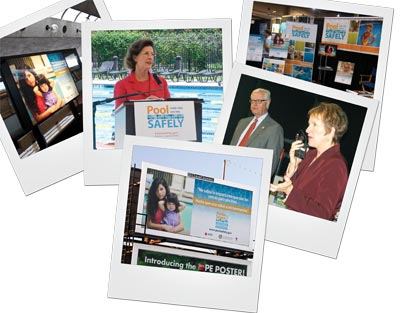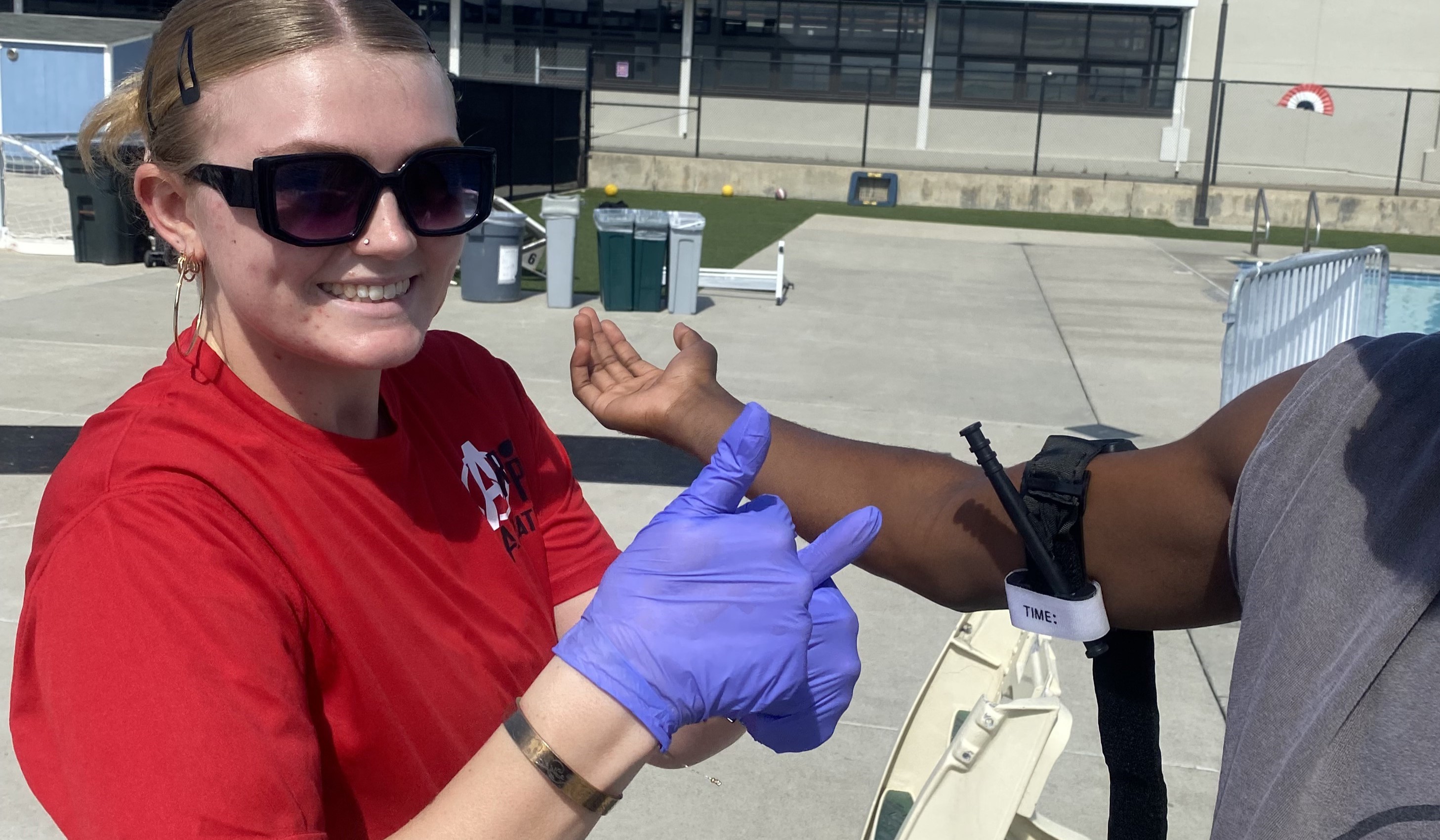When talking with new customers, contractors almost always are the first to raise the topic of pool safety.
Those discussions, until recently, likely relied on the builder’s knowledge of the latest requirements. And they almost certainly weren’t accompanied by branded, easy-to-read consumer-friendly information explaining how to take proper safety provisions, or the different types of safety equipment and products available.
In late 2010, all that changed when the Consumer Product Safety Commission, the federal agency tasked with administering the Virginia Graeme Baker Pool and Spa Safety Act, awarded a number of grants to support its Pool Safely campaign.
Working in concert with PR firm Widmeyer Communications, the campaign has sought to reach consumers nationwide with a clear message: Simple steps save lives.
“We want to make sure that all pools are functioning properly,” says Kathleen Reilly, public affairs specialist with the CPSC. “It’s a really big project, but the message that we’re promoting helps [pool professionals] send a story of safety and concern [to parents], and convey that it doesn’t have to cost a fortune to make a pool compliant.”
Following is a snapshot of the organizations most closely tied to the pool industry in both mission and target audience, and what can be expected of each in the coming year.
Organization: Association of Pool & Spa Professionals (APSP)
Funding (thru Sept. 2011): $363,760
Target Audience: Pool Service Professionals, Aquatics Managers, Lifeguards, Manufacturers, Distributors, Retailers in all areas except N.Y., N.J., Conn. and Pa.
Planned Programming: APSP has been tasked with transmitting the CPSC’s Pool Safely message to stakeholders throughout the industry across 46 states.
The group kicked off its effort in November at the 2010 International Pool | Spa | Patio Expo, where it supplied water-safety and entrapment-prevention materials ranging from door hangers with tips and checklists, to point-of-purchase display stands, to brochures for pool operators and service
technicians to leave with customers.
“We’re going to tailor our training and remind people to convey these safety messages to homeowners,” says Carvin DiGiovanni, senior director, technical and standards at APSP. “The CPSC is trying to educate in addition to regulate, so now that they’re on board there’s a heightened awareness. And I believe the perception that the industry isn’t concerned about safety is starting to erode away.”
The association will continue to promote the message through industry videos, with a dedicated Pool Safely page on its Website, and via social media channels such as Facebook and Twitter.
Beginning early this year, APSP also will conduct a series of 10 classes geared toward service technicians and aquatics facility managers. Each event should last about 2-3 hours, and will describe elements of the VGB Act, as well as methods of compliance and pinpointing potential entrapment hazards, DiGiovanni says. The instruction will be based on the ANSI-7 Suction Entrapment Avoidance Standard, which was developed by APSP and adopted by the International Code Council in 2008.
These face-to-face events will be held at various locations throughout the country, and at least a handful will take place during conferences or symposiums — confirmed venues include the Mid-America Pool & Spa Show in St. Charles, Ill. (Jan. 17-21), the Orlando Pool & Spa Show in Orlando, Fla. (Feb. 11-12), the Southwest Pool & Spa Show in Arlington, Texas (Feb. 14-19), and the Western Pool & Spa Show in Long Beach, Calif. (March 31-April 2).
In addition to live classes, APSP will offer training online, so pool professionals can download and watch the presentations free of charge. It also will include a train-the-trainer program, which allows attendees to transmit the information to members of their own organizations or companies.
Organization: Northeast Spa & Pool Association (NESPA)
Funding (thru Sept. 2011): $239,151
Target Audience: Health and Building Code Officials, Pool Operators, Lifeguards, Pool Industry Service and Maintenance Personnel in N.Y., N.J., Conn. and Pa.
Planned Programming: NESPA is spearheading Pool Safely messaging efforts throughout much of the Northeast. The association, which represents more than 800 companies across the region, will carry education and training initiatives to many of the same interests as APSP, in addition to two key audiences: health and building code officials.
NESPA administrators in late 2010 were developing eight separate templates, one for each set of code officials in its four-state area. They also were scheduling training through the various state departments — community affairs, public health, etc.
However, the task is complicated because every state handles building code approval and enforcement differently, “so we’re trying to take all those subtleties into account,” says Paulette Pitrak, deputy executive director at NESPA in Hamilton, N.J.
“We’ve been reviewing their state codes with an emphasis on suction entrapment and individual barrier regulations,” Pitrak says. “And we’re looking at how their code officials are handling VGB enforcement.”
The association hopes to collect additional data from the various health departments by identifying the number and locations of public pools statewide. It also will work with local parks and recreation departments, YMCAs, Red Cross affiliates and other organizations that may conduct or coordinate CPO classes.
Once all facilities have been accounted for, NESPA will send each one posters, PSAs and lanyard cards that spotlight best practices, such as ensuring drain covers are properly affixed, and that additional barriers and measures are in place.
Beginning in late winter, the group’s education efforts should take flight, with dozens of three-hour presentations to code officials set to be held throughout the region. A kickoff is planned for the Atlantic City Pool & Spa Show, from Jan. 25-27.
“As far as our goals, we’re going to evaluate how they’re doing after they’ve gone through the program,” Pitrak adds. “But we also want code officials to network more with each other. They tend to be very isolated, so we want to get them talking to one another and encourage dialogue and troubleshooting between states.”
Organization: National Drowning Prevention Alliance (NDPA)
Funding (thru Sept. 2011): $1,286,100
Target Audience: Consumers, First-Responders, Swim Schools, Pool Owners, Lifeguards, Pool Managers, Maintenance Workers, Pool Industry Stakeholders
Planned Programming: With particular focus on pool-heavy states including Arizona, California, Florida and Texas, the NDPA will tap into its diverse membership for maximum impact. The drowning-prevention coalition has perhaps the broadest target audience, ranging from the public (especially minorities and hard-to-reach communities) to emergency personnel to the pool industry.
For consumers, it will launch a national public relations/media campaign highlighting layers of protection and the importance of swim lessons; a pool-safety curriculum for nursery school-aged children; a series of video PSAs; and a coordinated effort with the USA Swimming Foundation’s “Make A Splash” campaign promoting swim lessons to underserved demographics.
Pool professionals can expect to see NDPA booths at various trade shows and community events.
Perhaps the NDPA’s most innovative initiative is a Pool & Spa Safety Technician training program, which is modeled after the successful National Certified Child Passenger Safety Program for child car seat inspections. In it, firefighters and other first-responders will undergo two-and-a-half days of training on how to identify potential hazards in the backyard, recommend layers of protection, promote injury-prevention and proper supervision, and more.
Once trained, the Technician would enter a backyard (at the homeowner’s request), administer a 10-question test to measure a resident’s knowledge of pool safety, document the backyard environment, explain findings, and then re-administer the test to gauge retention. A follow-up visit would be conducted several months later to log any changes that were undertaken and why (or determine why not, if no recommendations were followed).
In its pilot year, the program will be rolled out in Orange County, Calif. (Orange County Fire Authority), Phoenix (Phoenix Fire Department) and Broward County, Fla.(Broward County Fire Rescue). Officials expect to begin training fire personnel in February.
“It’s an education program — it’s not about selling products,” says Kristin Goffman, executive director of the NDPA.
If it proves beneficial, Goffman would like to expand the program to potentially include CPOs, swim instructors and service techs as Safety Technicians.“It’s something new and different, but it’s a model that works,” Goffman adds. “And it’s a pilot program, so it’s still all about learning — we’re looking for a lot of feedback.”



